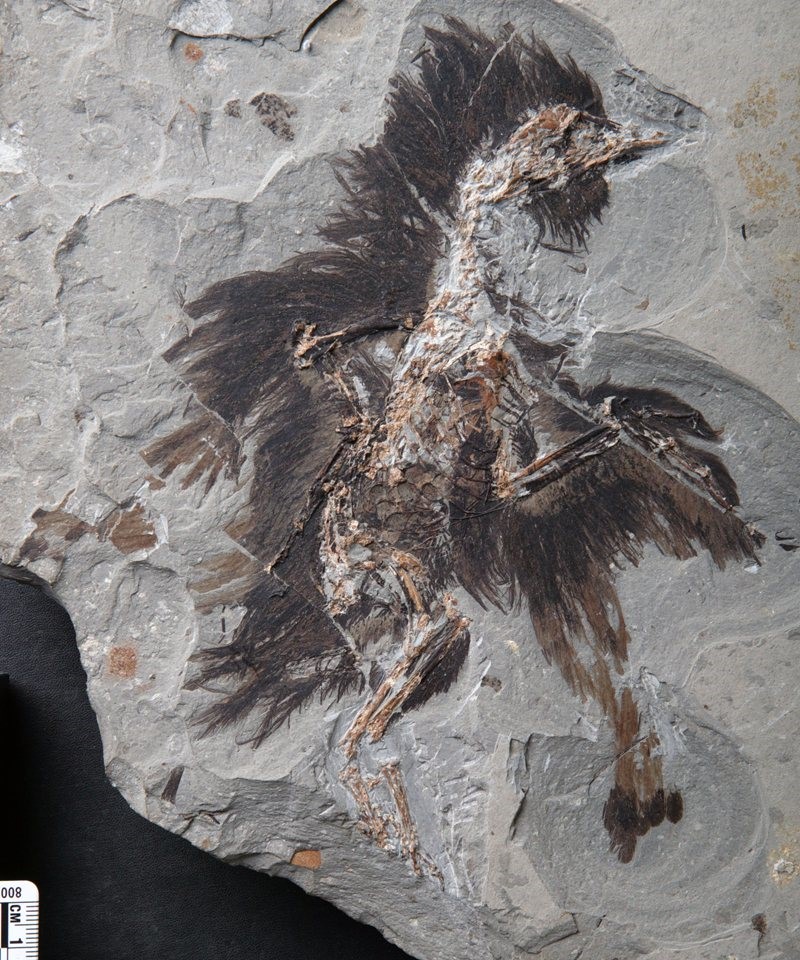
A team of international scientists led by researchers from the Chinese Academy of Sciences reported recently the oldest-known fossil evidence of beta-keratin from feathers of a 130 million-year-old basal bird from the famous Early Cretaceous Jehol Biota.
Feathers and feather-like epidermal structures are well documented in several groups of non-avian dinosaurs and basal birds. Round-to-elongated microbodies associated with these feathers and feather-like structures were first interpreted as microbes.
But more recently, these bodies were reinterpreted as remnant melanosomes and, subsequently, hypotheses of dinosaurian color, behavior, habitat, and physiology were proposed based upon this reinterpretation. However, melanosomes and microbes overlap completely in size and shape, and thus these hypotheses are equally plausible.
Paleontologists from NIGPAS, IVPP, Linyi University and North Carolina State University (USA), adopted multiple molecular and chemical methods in paleontological study to seek and determine the existence of melanosomes in bird feather fossils.
Scientists applied immunogold to identify protein epitopes at high resolution, by localizing antibody-antigen complexes to specific fossil ultrastructures. Their study reported fossil evidence of feather structural protein (betakeratin).
"Multiple independent analyses of both microbodies and associated matrix recovered from the fossil feathers confirm that these microbodies are indeed melanosomes," said Dr. PAN Yanhong from NIGPAS, corresponding author of this paper.
Their study showed that these bodies are found deep into a dense cortex in parts where it is preserved, consistent with modern feathers.
Scientists also presented the first in-situ high resolution chemical evidence to distinguish melanosomes from bacteria in fossil feathers and show that the matrix in which they are embedded is keratinous.
"This study represents a breakthrough in the study of ultrastructures of fossil feathers and has provided the methods to apply to the controversial issue of whether the microbodies in many feathered dinosaurs and early birds are really melanosomes, and sheds new light on molecular preservation within normally labile tissues preserved in ancient fossils," said Prof. ZHOU Zhonghe from IVPP, a co-author of the paper.
The study was supported by the Chinese Academy of Sciences, National Natural Science Foundation of China and the Ministry of Science and Technology of China.
Reference: Yanhong Pan, Wenxia Zheng, Alison E. Moyer, Jingmai K. O'Connor, Min Wang, Xiaoting Zheng, Xiaoli Wang, Elena R. Schroeter, Zhonghe Zhou, and Mary H. Schweitzer, 2016, Molecular evidence of keratin and melanosomes in feathers of the Early Cretaceous bird Eoconfuciusornis, http://www.pnas.org/cgi/doi/10.1073/pnas.1617168113
. .....CONTENTS OF PALAEONEWS NO.4.....
Download:
